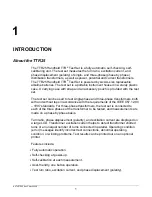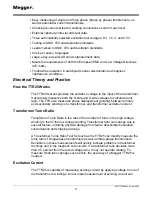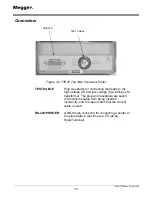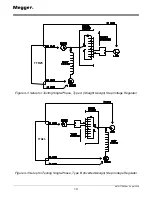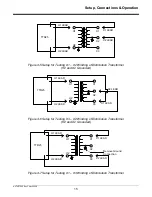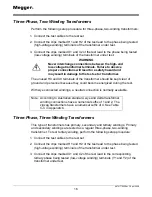
M
AVTMTTR25 Rev C April 2008
2
Easy measuring of single and three phase (phase by phase) transformers, as
well as potential & current transformers.
Checking reverse test lead or winding connections at start of each test.
External optional printer records test data.
Three automatically selected excitation test voltages: 8 V, 1.5 V, and 0.5 V.
Testing to ANSI, IEC and Australian standards.
Leads marked to ANSI, IEC and Australian standards.
Choice of seven languages
Large, easy-to-read LCD shows alphanumeric data
Meets the requirements of both the European EMC and Low Voltage Directives
(CE mark).
Trouble-free operation in switchyards under electrostatic and magnetic
interference conditions.
Electrical Theory and Practice
How the TTR25 Works
The TTR25 test set provides the excitation voltage to the input of the transformer.
It accurately measures both the H-side and X-side voltages to calculate turns
ratio. The TTR also measures phase displacement (polarity) between primary
and secondary windings of a transformer, and transformer excitation current.
Transformer Turns Ratio
Transformer Turns Ratio is the ratio of the number of turns in the high voltage
winding to that in the low voltage winding. Transformer ratio can change due to
several factors, including physical damage from faults, deteriorated insulation,
contamination and shipping damage.
A Transformer Turns Ratio Test Set such as the TTR25 can directly measure the
turns ratio of single-phase transformers as well as three-phase transformers.
Deviations in these measurements will quickly indicate problems in transformer
windings and in the magnetic core circuits. If a transformer ratio deviates more
than 0.5 percent from the rated voltage ratio, it may not operate reliably. To
measure small ratio changes such as this, the accuracy of a Megger TTR25 is
needed.
Excitation Current
The TTR25 is capable of measuring exciting current by applying voltage to one of
the transformer’s windings. An accurate measurement of exciting current can









